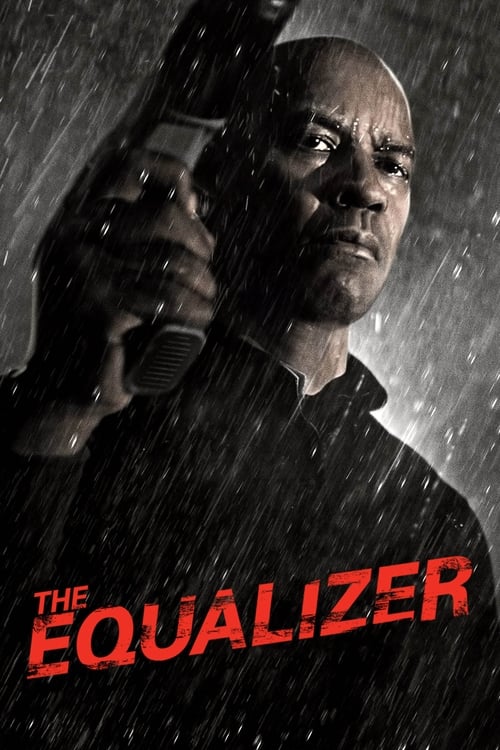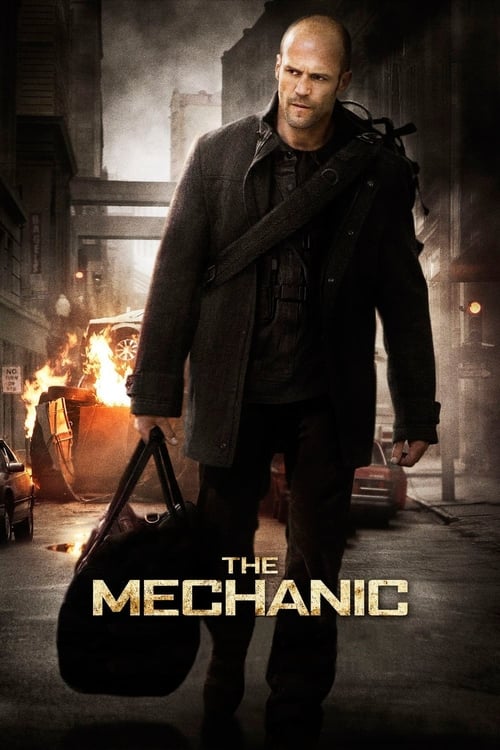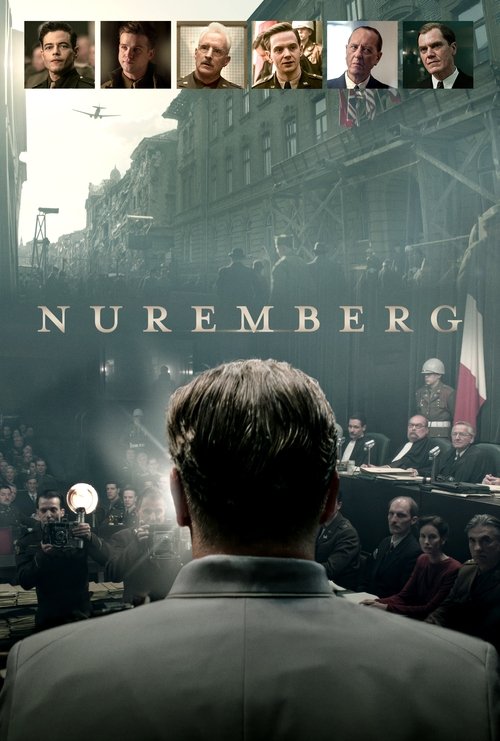
Ask Your Own Question
What is the plot?
A Warden's Ransom opens with Samantha Brandt stepping into her role as the new warden of Roundwood Prison, a grim, high-security men's facility. The atmosphere is tense and charged; Brandt, portrayed with steely resolve by Diane Neal, commands the prison with a calm professionalism that immediately establishes her as a seasoned leader. Though the film never specifies an exact date or time, the sterile corridors and cold metal bars evoke a timeless sense of institutional menace. Brandt's first day is marked by a palpable undercurrent of danger and distrust among the staff and inmates alike.
The tension escalates sharply with the arrival of Vic Miller (Devon Sawa), a notorious serial killer whose transfer to Roundwood is a media spectacle. Surrounded by flashing cameras and reporters, Miller makes a chilling public announcement: he offers a $50 million bounty to anyone who can break him out of prison. His voice is calm but laced with menace as he declares, "Whoever gets me out gets the money. It's that simple." This brazen challenge instantly destabilizes the prison's fragile order, planting seeds of chaos and greed among inmates and staff.
Inside the prison, Brandt's authority is subtly undermined by the internal politics and corruption that lurk beneath the surface. Early scenes introduce key figures: Kit (Jodelle Ferland) and Amy (Melissa Marie Elias), two prison staff members who express admiration for Brandt's leadership and her ability to balance her demanding job with motherhood. Their brief camaraderie is shattered when Dirkson, a senior official with a cold, calculating demeanor, abruptly enters Brandt's office. He brusquely dismisses the women, locking the door behind them to make a secretive call to the Governor. His furtive behavior hints at a deeper conspiracy brewing within the prison's administration.
Meanwhile, Guard Commander Davis emerges as a pivotal antagonist. Davis's manipulation of Miller is subtle but telling: he instructs Miller to change into blue jeans, a seemingly trivial detail that signals special treatment and collusion. The camera lingers on Davis's calculating eyes as he escorts Miller through the cell block gates, discussing the ransom with a conspiratorial tone. A young guard, stationed in the security monitor room, covertly aids Davis by manipulating the prison's electronic doors and alarms, giving the conspirators a tactical advantage.
The plot thickens as Brandt discovers that Miller is not simply a prisoner but a pawn in a larger scheme. Several guards, led by Davis, are complicit in a plan to hold Miller hostage in the prison laundry room until the ransom is paid. This betrayal cuts deep--Brandt realizes that the threat comes not only from the inmates but from within her own ranks. When another guard attempts to intervene and stop Davis, he is violently assaulted, underscoring the ruthlessness of the conspiracy.
Brandt's response is swift and decisive. She retreats to her office, where she retrieves a gym bag containing combat gear, symbolizing her transformation from administrator to warrior. "I'm not letting this place fall apart on my watch," she says with grim determination. Armed and ready, Brandt storms through the prison corridors, accompanied by one loyal guard whose identity is revealed later as a steadfast ally.
The situation escalates when Dirkson physically stops Amy from calling for outside backup. In a chilling moment, Dirkson knocks Amy unconscious and takes Kit hostage, raising the stakes and personalizing the conflict. The prison goes into lockdown, and the other inmates, sensing the upheaval, shout angrily at Miller as he is paraded through the halls by Davis and his cronies. The tension inside the prison is suffocating, the air thick with fear and anticipation.
Brandt's tactical acumen shines as she breaks into the security monitor room. With the help of her loyal guard, she wrests control from the young guard who has been aiding the conspirators. This move cuts off Davis and Dirkson's ability to manipulate the prison's electronic systems, leveling the playing field.
The climax unfolds in a brutal confrontation as Brandt must fight her way through a furious cell block of inmates. She deploys two tear gas canisters, the stinging smoke filling the air and scattering the prisoners. The camera captures Brandt's fierce determination as she navigates the chaos, every breath visible in the haze. In a poignant moment, she rescues Quaid (Ernesto Griffith), an inmate who had earlier shown loyalty by assisting her. Quaid's gratitude and willingness to help underscore the complex alliances within the prison walls.
Dirkson's desperation culminates in a final showdown. His attempt to maintain control by holding Kit hostage is thwarted when Brandt confronts him directly. The confrontation is terse and intense; Brandt's voice cuts through the tension: "This ends now, Dirkson. You're finished." The film does not explicitly show Dirkson's death, but his defeat is clear as Brandt regains command.
Davis's fate is less explicitly detailed, but the narrative implies that Brandt's intervention neutralizes his threat. The corrupt guards are rounded up, their conspiracy exposed and dismantled. Miller, the catalyst of the chaos, remains imprisoned, his plan foiled. The film closes with Brandt standing resolute amid the restored order of Roundwood Prison, her leadership vindicated.
The final scenes emphasize Brandt's resilience and integrity. The prison, once on the brink of collapse, is secured once more, and the corrupt elements within its walls are brought to justice. Brandt's journey from a confident administrator to a battle-hardened leader is complete, symbolizing the triumph of courage and moral strength over betrayal and chaos.
The film ends on a note of hard-earned peace, with Brandt's silhouette framed against the harsh fluorescent lights of the prison, a silent guardian of order in a world fraught with danger. There are no easy victories here, only the relentless struggle to maintain justice behind bars.
What is the ending?
In the ending of "A Warden's Ransom," the main character, Warden, faces the consequences of his actions as he attempts to save his daughter from a dangerous situation. The climax unfolds with a tense confrontation, leading to a resolution that leaves the characters changed and the moral complexities of their choices laid bare.
As the film approaches its conclusion, the tension escalates. Warden, having been driven by desperation to protect his daughter, finds himself in a precarious situation. He confronts the antagonist, who has taken his daughter hostage, and the stakes are painfully high. The emotional weight of the moment is palpable as Warden grapples with fear, anger, and the overwhelming need to save his child.
In a gripping scene, Warden manages to outsmart the antagonist, showcasing his resourcefulness and determination. The confrontation is fraught with danger, and the audience can feel the urgency in Warden's every move. As he fights to rescue his daughter, the emotional stakes are underscored by flashbacks of their bond, highlighting the love that drives him.
Ultimately, Warden succeeds in rescuing his daughter, but not without cost. The aftermath of the confrontation leaves him physically and emotionally scarred. The film closes with Warden and his daughter embracing, a moment of relief tinged with the understanding that their lives will never be the same. The final scenes reflect on the themes of sacrifice, the lengths a parent will go to protect their child, and the moral ambiguities that arise in desperate situations.
In the expanded narrative:
The final act of "A Warden's Ransom" begins with a palpable sense of dread as Warden receives a call from the antagonist, who has taken his daughter hostage. The camera captures Warden's face, a mixture of fear and determination, as he realizes the gravity of the situation. He knows he must act quickly to save her, and the urgency of the moment is underscored by the ticking clock in the background.
Warden gathers his resources, his mind racing with thoughts of his daughter. He recalls moments from her childhood, the laughter they shared, and the bond they forged. These memories fuel his resolve, and he prepares himself for the confrontation ahead. The scene shifts to the antagonist's hideout, a dimly lit warehouse that feels claustrophobic and menacing. The atmosphere is thick with tension as Warden approaches, his heart pounding in his chest.
As he enters the warehouse, the sound of his footsteps echoes ominously. The camera follows him closely, capturing the sweat on his brow and the determination in his eyes. He spots his daughter tied up, fear etched on her face, and a surge of adrenaline propels him forward. The antagonist appears, a sinister grin on his face, and the standoff begins. Warden's voice trembles with a mix of anger and desperation as he demands the release of his daughter.
The confrontation escalates quickly, with Warden using his wits to outmaneuver the antagonist. The fight is brutal, filled with physicality and raw emotion. Warden's desperation drives him to take risks, and the audience can feel the stakes rising with each passing moment. As he finally gains the upper hand, the camera captures the moment of triumph in his eyes, but it is short-lived as he realizes the emotional toll this ordeal has taken on him.
In the aftermath, Warden frees his daughter, and they share a heartfelt embrace. Tears stream down their faces, a mixture of relief and sorrow. The camera lingers on their reunion, emphasizing the bond that has been tested but ultimately remains intact. However, the weight of their experience hangs heavily in the air, suggesting that while they are physically safe, the emotional scars will linger.
The film concludes with Warden and his daughter walking away from the warehouse, the sun setting in the background. The final shot captures their silhouettes against the fading light, symbolizing hope but also the shadows of their ordeal. Warden's fate is one of a changed man, burdened by the choices he made, while his daughter, though safe, carries the emotional weight of the trauma they endured together. The ending leaves the audience reflecting on the complexities of love, sacrifice, and the lengths one will go to protect family.
Is there a post-credit scene?
In the movie "A Warden's Ransom," there is no post-credit scene. The film concludes its narrative without any additional scenes or content after the credits roll. The story wraps up with the resolution of the main plot, focusing on the characters' fates and the consequences of their actions throughout the film. The absence of a post-credit scene allows the audience to reflect on the themes of justice and redemption that permeate the story.
What motivates the warden to take drastic actions in the film?
The warden, driven by a mix of desperation and a desire for control, finds himself in a precarious situation where he feels the need to assert his authority. His motivations stem from a personal crisis that intertwines with his professional life, leading him to make morally questionable decisions.
How does the relationship between the warden and the inmates evolve throughout the film?
Initially, the warden maintains a strict and authoritative demeanor, viewing the inmates as mere subjects of his control. However, as the plot unfolds, he begins to see them as individuals with their own stories and struggles, leading to a complex dynamic filled with tension, empathy, and conflict.
What role does the hostage situation play in the development of the main characters?
The hostage situation serves as a catalyst for character development, forcing both the warden and the inmates to confront their fears, desires, and moral boundaries. It reveals their vulnerabilities and strengths, ultimately reshaping their identities and relationships with one another.
What are the key turning points in the warden's character arc?
Key turning points in the warden's character arc include his initial decision to take extreme measures to maintain order, the moment he realizes the consequences of his actions, and his eventual confrontation with his own moral compass, leading to a profound transformation by the film's climax.
How do the inmates respond to the warden's authority throughout the film?
The inmates initially respond with resistance and defiance to the warden's authority, viewing him as an oppressive figure. However, as the story progresses, some begin to challenge their own perceptions of power and authority, leading to unexpected alliances and confrontations that shift the balance of control.
Is this family friendly?
"A Warden's Ransom," produced in 2014, contains several elements that may not be suitable for children or sensitive viewers. Here are some potentially objectionable aspects:
-
Violence and Threats: The film includes scenes of violence and intimidation, which may be distressing for younger audiences. Characters face threats that create a tense atmosphere.
-
Emotional Distress: There are moments of intense emotional turmoil, including fear, desperation, and betrayal, which could be upsetting for sensitive viewers.
-
Themes of Corruption and Morality: The narrative explores dark themes such as corruption within the prison system and moral dilemmas, which may be complex and unsettling for younger viewers to understand.
-
Confrontations: There are confrontational scenes that may involve aggressive behavior, which could be alarming for children.
-
Implied Danger: The film suggests situations of danger and peril, particularly involving the safety of characters, which could evoke anxiety.
Overall, while the film may have a compelling narrative, its themes and scenes may not be appropriate for a family-friendly viewing experience.



































